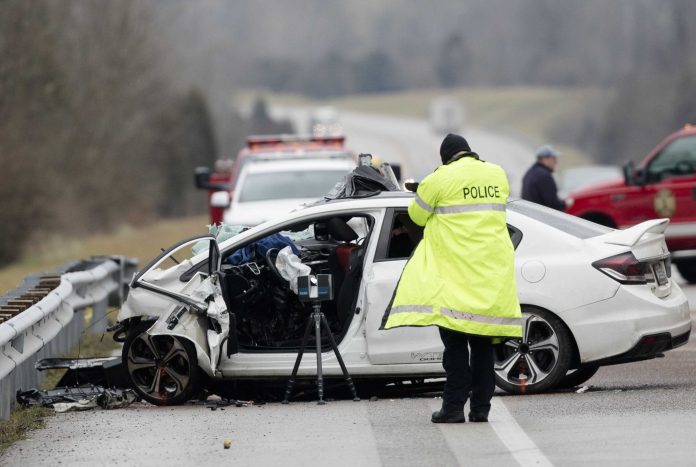
By TOM KRISHER and HOPE YEN
Associated Press
DETROIT (AP) — The number of people killed on U.S. roadways fell slightly from April through June, the first decline in two years as pandemic-era reckless driving appeared to ease. But the government says the number of deaths remains at a crisis level.
Estimates from the National Highway Traffic Safety Administration show that 20,175 people died in crashes from January through June, a 0.5% increase over the same period last year.
Yet the second-quarter decline ended a string of seven straight quarterly increases that began in the summer of 2020 with the onset of the coronavirus pandemic. The agency estimated that 10,590 people died this year on roadways from April to June, nearly 5% fewer than the same period a year ago.
Transportation Secretary Pete Buttigieg said while deaths may be declining, they are still at levels that require urgent action. “These deaths are preventable, not inevitable, and we should act accordingly,” he said in a statement.
NHTSA Acting Administrator Ann Carlson told a group of state safety officials Monday that she hopes the recent decline is the beginning of a downward trend, but that the number of deaths remains unacceptable. “That is not the new normal we want,” she told the Governors Highway Safety Association.
Fatalities began to rise two years ago when roads were largely empty due to stay-at-home orders in many states. With less traffic, speeds increased as did reckless and impaired driving, leading to a record spike in deaths last year. Many people weren’t wearing seat belts, the government said.
Carlson said that because the estimates for this year are early, the agency doesn’t have specifics about why fatalities dropped. Agency estimates are typically close to actual numbers, which won’t be released until later in the year.
There also was a small second-quarter drop in the traffic death rate per 100 million miles driven, from 1.34 in the second quarter of 2021, to 1.27 this year, Carlson said.
Auto safety advocates welcomed the dip but said there is more the Biden administration can be doing to reduce traffic fatalities.
For many months now, crashes have declined even as deaths have surged, suggesting reckless driving that could now be declining as offices reopen and more cars return to the road, said Michael Brooks, executive director of the nonprofit Center for Auto Safety.
“What it may be is that we’re seeing an easing of some of the issues that were caused by the pandemic — speeding, open roads, risky driving issues,” Brooks said. “Traffic is returning to normal, the roads aren’t as empty as they were.”
“The fact is the fatality rate is still very, very high,” he said. “There is a lot that remains to be done.”
Buttigieg earlier this year unveiled a national strategy aimed at reversing the trend of rising deaths, including new federal guidance and billions in grants under President Joe Biden’s infrastructure law over the next two years to spur states and localities to lower speed limits and embrace safer road design. But auto safety groups say the Biden administration has remained slow to act in other areas, such as rulemaking to mandate automatic emergency braking in all passenger vehicles as required under the 2021 infrastructure law.
“I think it’s premature to be hopeful about the slight dip in fatalities especially considering the tremendous loss that we’ve experienced over the last couple years,” said Cathy Chase, president of Advocates for Highway and Auto Safety.
“We do know good safety systems, if implemented, will prevent many crashes,” she said.
Nearly 43,000 people were killed on U.S. roads last year, the highest number in 16 years as Americans returned to the roads. The 10.5% jump over 2020 numbers was the largest percentage increase since NHTSA began its fatality data collection system in 1975.



















